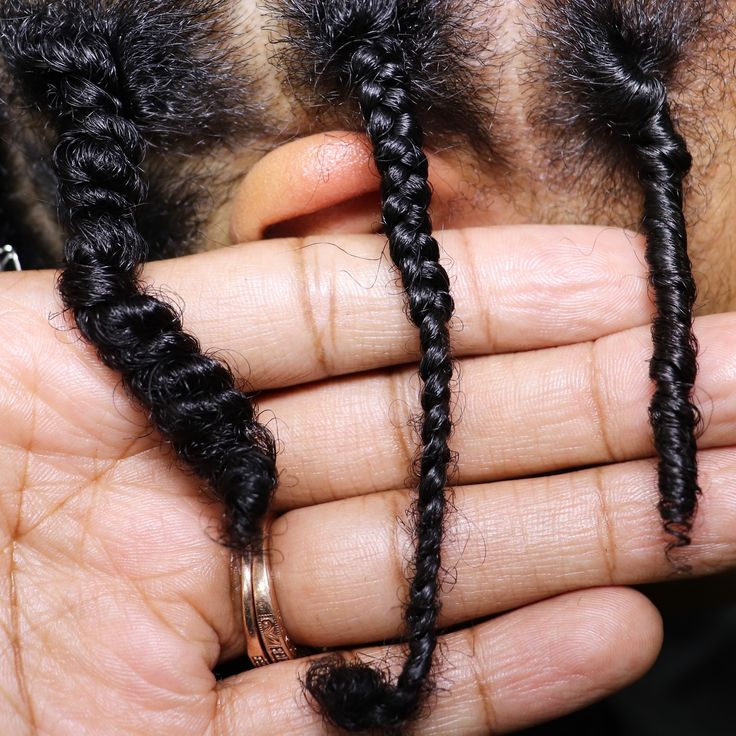
6 Popular Methods to Start Your Loc Journey
Share
Starting Your Loc Journey: A Comprehensive Guide to the Top Methods
So, you’re ready to embark on your loc journey—congratulations! Whether you’ve grabbed a comb and some products or are already planning to consult a loctician, you might be wondering, “How do I start my locs?” or “What should I tell my loctician?” Starting locs is an exciting process with several methods to choose from. Each method offers unique benefits and considerations. Here’s a breakdown of the six popular methods to kick off your loc journey:
1. Two-Strand Twists
Description: This method involves dividing your hair into sections and twisting two strands of hair around each other to form small twists.
Pros:
- DIY-Friendly: Easy to do at home with minimal tools.
- Defined Look: Creates a neat, uniform appearance.
- Flexibility: Twists can be unraveled and redone if needed.
Cons:
- Maintenance Required: May unravel if not maintained properly.
- Maturation Time: Takes longer to mature into full locs compared to some methods.
2. Comb Coils

Description: Comb coils are created by using a comb to twist and coil small sections of hair around itself to form tight spirals.
Pros:
- Neat Appearance: Produces tight, defined coils that lock well.
- Ideal for Short Hair: Works well if your hair is relatively short.
Cons:
- Time-Consuming: Can be labor-intensive, especially for longer hair.
- Maintenance Needed: Requires regular upkeep to prevent unraveling.
3. Braids/Braidlocs
Description: Hair is divided into sections and braided to start the locs. The size of the braids determines the size of the locs.
Pros:
- Longevity: Can last longer without frequent retightening compared to twists.
- Versatile: Suitable for various hair types.
Cons:
- Maturation Time: May take longer to mature into locs.
- Bulkiness: Larger braids can create bulkier locs.
4. Backcombing
Description: This method involves teasing the hair at the roots and working towards the ends to create a tangled mass, which is then shaped into locs.
Pros:
- Texture Variety: Works well for various hair textures.
- Thicker Locs: Can create thicker locs.
Cons:
- Potential Damage: Can be damaging if not done gently.
- Maintenance: Requires consistent maintenance to keep locs tight.
5. Instant Locs
Description: Instant locs are created by using a tool or method to form mature locs right from the start. This often involves a combination of techniques and can be done with or without extensions.
Pros:
- Immediate Results: Provides the look of mature locs immediately.
- Less Waiting: No need to wait for hair to mature over time.
Cons:
- Cost: Can be expensive, especially if using extensions.
- Potential Strain: The process can put stress on your hair and scalp.
6. Freeform Locs
Description: This method allows your hair to naturally mat and form locs without intentional styling.
Pros:
- Low Maintenance: Requires minimal upkeep.
- Natural Look: Produces a more organic and natural appearance.
Cons:
- Development Time: Takes the longest to develop into locs.
- Unevenness: Can result in uneven or irregular loc shapes.
Choosing the Right Method
Selecting the best method for starting your locs depends on various factors, including your hair type, desired loc size, maintenance preferences, and personal style. Consider how much time and effort you’re willing to invest in the process. Consulting with a professional loctician can also provide valuable insights and help you choose the method that aligns with your goals.
Starting your loc journey is an exciting step, and with the right information, you can choose the method that will best suit your needs and set you on the path to beautiful, well-maintained locs. Enjoy the process and embrace the unique beauty of your locs!
Have you chosen a method for your locs? Share your experiences and tips in the comments below!
